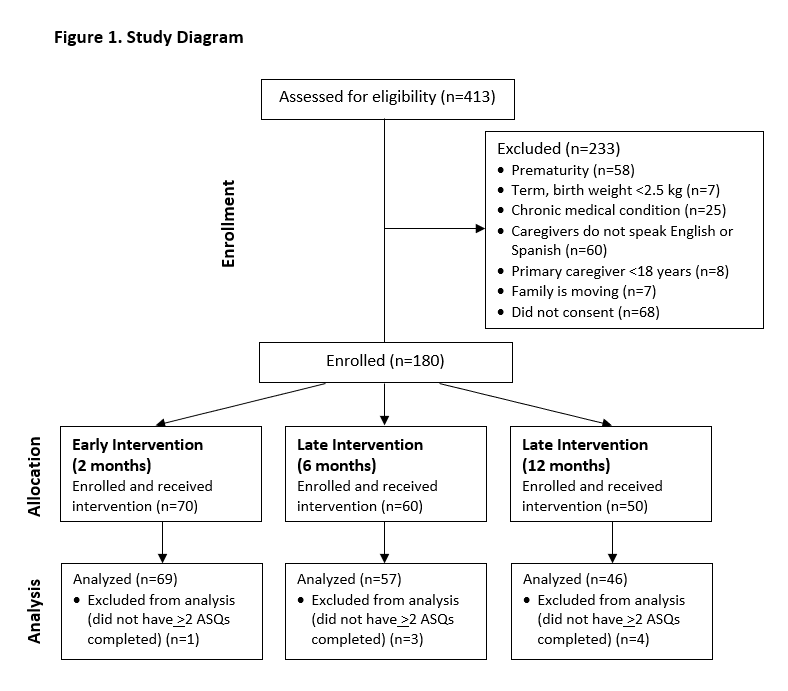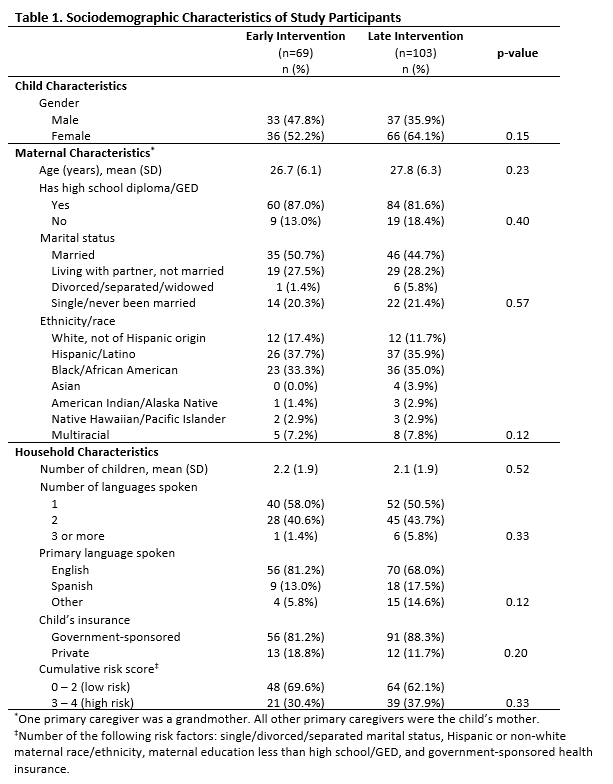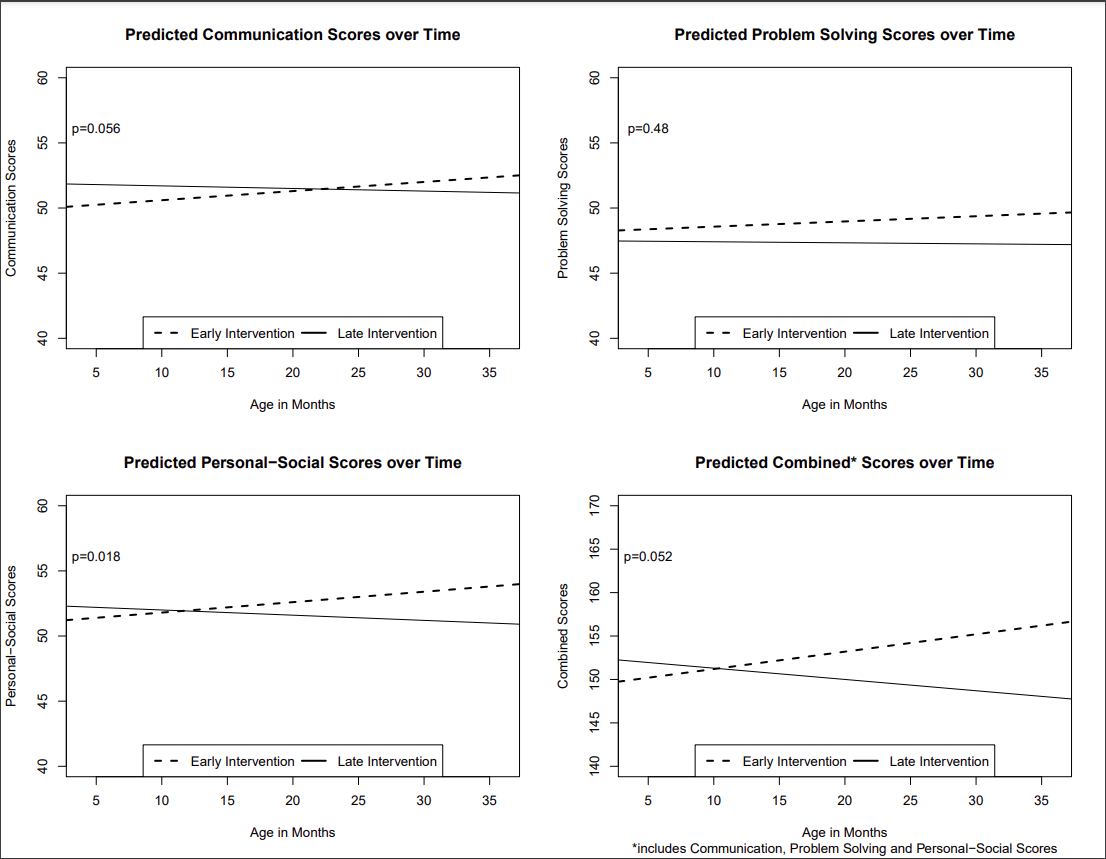General Pediatrics: Primary Care/Prevention
General Pediatrics 5
386 - Assessing Effects of a Language-Promoting Intervention in Early Versus Late Infancy: Developmental Trajectories to 36 Months
Sunday, April 30, 2023
3:30 PM - 6:00 PM ET
Poster Number: 386
Publication Number: 386.314
Publication Number: 386.314
Gretchen Domek, University of Colorado, Aurora, CO, United States; Lori Silveira, University of Colorado Anschutz Campus, Aurora, CO, United States; Helene Kuffel, University of Colorado School of Medicine, Denver, CO, United States; Lauren H. Szafran, Johns Hopkins University, Denver, CO, United States; Andrea M. Jimenez-Zambrano, University of Colorado, Aurora, CO, United States; Bonnie Camp, University of Colorado School of Medicine, Denver, CO, United States

Gretchen Domek, MD, MPhil (she/her/hers)
Associate Professor
University of Colorado
Aurora, Colorado, United States
Presenting Author(s)
Background: Positive relational experiences during infancy have a profound impact on early brain and child development and are critical for future health, school readiness, and academic success. We have been evaluating a simple finger puppet intervention that takes one minute and costs $1USD to deliver in the primary care setting to promote caregiver-infant interactions.
Objective: We explored using developmental trajectories to determine later outcomes of our early intervention program by comparing trajectories to age 36 months to assess optimal intervention timing when delivered in early versus late infancy.
Design/Methods: Three cohorts were enrolled and given a puppet at 2 months (early intervention) and 6 or 12 months (late intervention) (Figure 1). Child development was assessed using the Ages & Stages Questionnaires (ASQ-3), which were independently collected during well visits. Scanned ASQ-3 forms from 2 to 36 months were obtained retrospectively through the electronic medical record. To compare longitudinal scores at different ages, all raw scores were first converted to z-scores. Longitudinal mixed effects models examined the trajectories of ASQ-3 scores over time by comparing the average intercepts and slopes for the early and late intervention cohorts.
Results: Of 180 children enrolled, 172 (96%) completed 2 or more ASQ-3 questionnaires and were included in the analysis, with a mean of 4.9 and a total of 843 questionnaires. Most children (85%) were on government-sponsored insurance (Table 1). Figure 2 shows the mixed effects longitudinal modeling between the early (n=69) and late (n=103) intervention cohorts and ASQ-3 non-motor domain scores. There were no statistical differences comparing cohort intercepts, while early intervention had a significant difference in slope compared to late intervention for the Personal-Social domain (0.12 [95% CI, 0.02, 0.2], p=0.018), resulting in higher predicted scores at 36 months. Early compared to late intervention had a difference in slope approaching significance for Communication (0.14 [95% CI, 0, 0.3], p=0.056) and the combined non-motor score (0.33 [95% CI, 0, 0.9], p=0.052). There were no significant differences in slopes for Problem Solving (0.05 [95% CI, -0.1, 0.2], p=0.48), Gross Motor (-0.009 [95% CI, -0.1, 0.08], p=0.84), Fine Motor (0.06 [95% CI, -0.04, 0.2], p=0.22), and total ASQ-3 (0.32 [95% CI, -0.1, 0.8], p=0.17) scores.
Conclusion(s): Finger puppets may provide a simple and scalable way to encourage responsive caregiver-infant interactions promoting language and social-emotional development, especially when provided in early versus late infancy.



